Dumbarton Rock
Geological Conservation Review site | GCR #2075 | Igneous Petrology | Carboniferous - Permian Igneous
Geological Conservation Review site | GCR #2075 | Igneous Petrology | Carboniferous - Permian Igneous
Scotland's geosites are chosen because of their local, national or international importance. Take only photos, leave only footprints: avoid causing any damage to this site. You can walk almost anywhere in Scotland without the need to ask permission or keep to paths, but you have a responsibility to care for your own safety, to respect people's privacy and peace of mind and to cause no damage.
This site is a Site of Special Scientific Interest (SSSI). It is an offence to intentionally or recklessly damage the protected natural features of a SSSI, and this includes unauthorised sample collection.
The right of access does not extend to quarries, building sites or any land where public access is prohibited, or to the collection of geological samples.
An intrusive basalt plugging the root of a Lower Carboniferous volcano
Dumbarton Rock is a volcanic plug of Lower Carboniferous age composed of hawaiitic basalt. It exhibits well-developed columnar jointing forming a pattern which indicates that the plug occupies a cone shaped pipe that narrows downwards. At the margin of the plug, hydrothermal chlorite and albite are developed and recent Sr-isotope studies suggest that the margin formed a preferred fluid pathway where an influx of fluids from the country rocks was heated and rose upward along cooling joints.
Footpath access to north side of rock and small beach area is via Football Ground. Old path now fenced off.
Footpaths are muddy
The only exposures of the country rock is in the beach area on the NW side of the rock.
Some litter and graffiti
SGG Leaflet - see pdfs
https://earthwise.bgs.ac.uk/index.php/Dumbarton_Rock_-_an_e…
Link to BGS earthwise page for Dumbarton Rock
https://geologyglasgow.org.uk/sites/dumbarton-rock/
Link to Dumbarton Rock on Geological Society of Glasgow website
There are no safety notes yet.
There are no site highlights yet.
Download new (2024) version of Strathclyde Geoconservation Group leaflet
David Webster
July 23, 2024
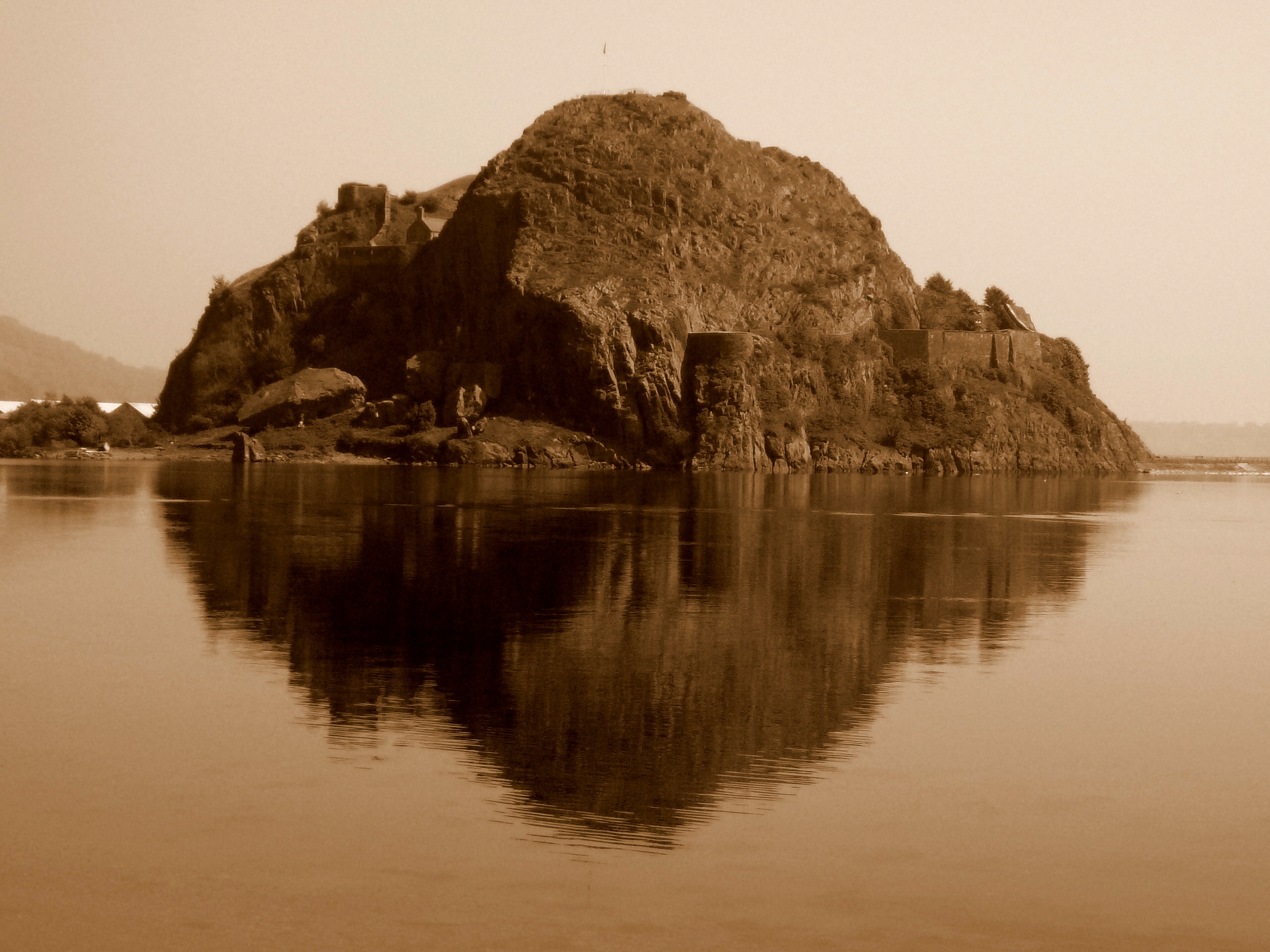
Old photo from the river
David Webster
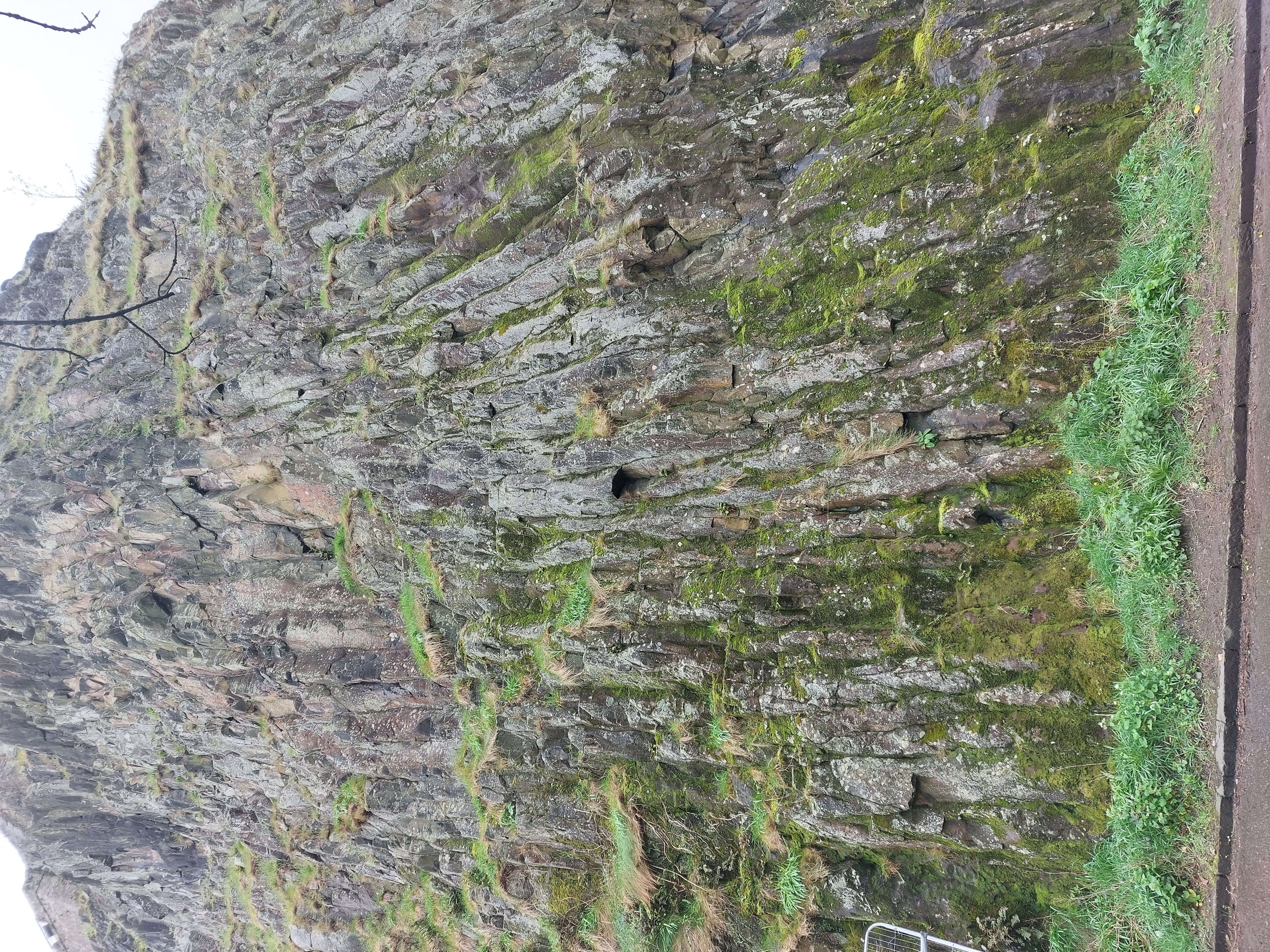
Columnar jointing in basalt. Columns are inclined radially outwards from the centre at a steep angle suggesting that the plug narros downwards.
Basalt is fine-grained with micro-phenocrysts of plagioclase
David Webster
April 11, 2024
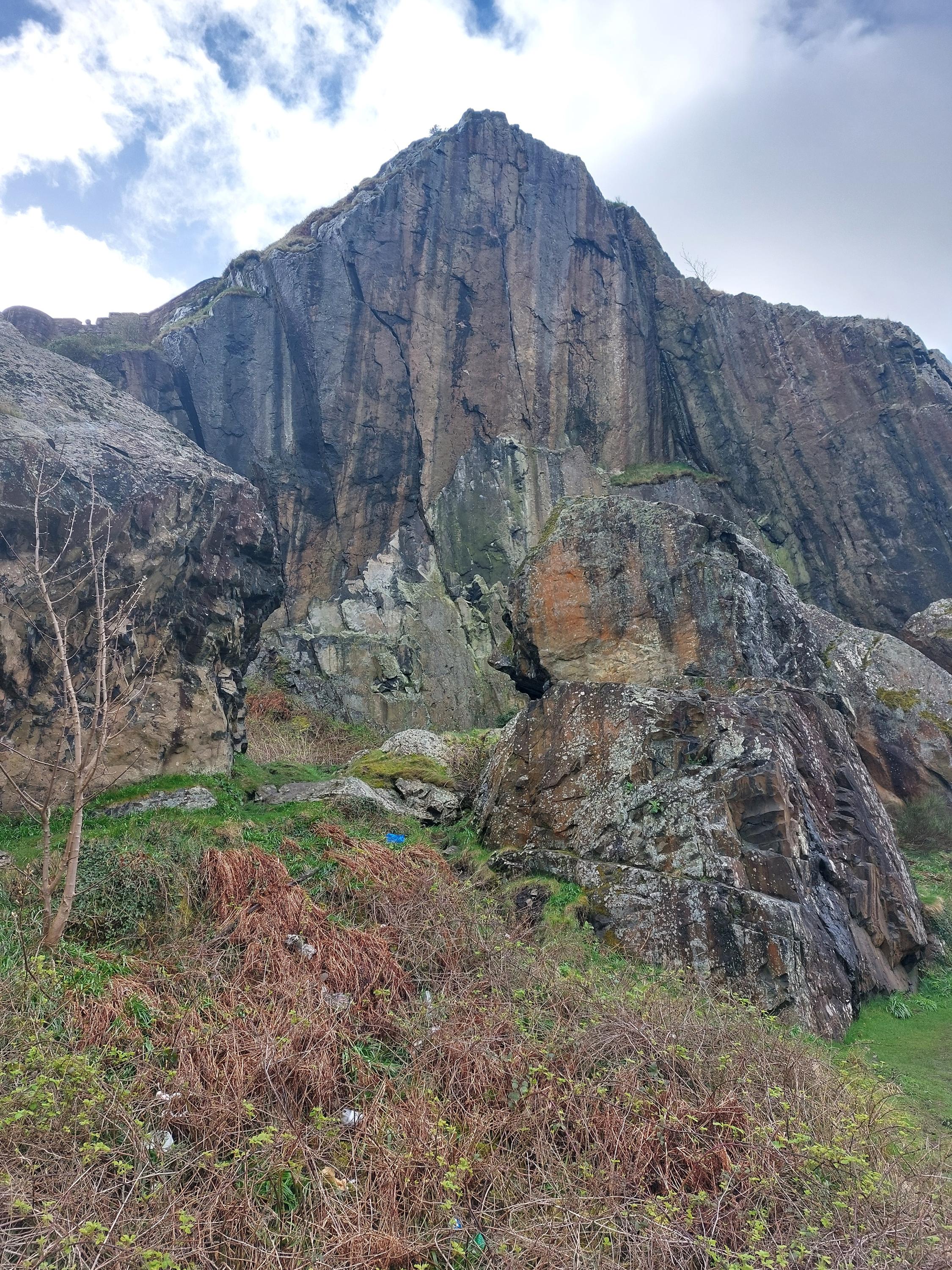
Basalt cliffs above the beach area
David Webster
April 11, 2024
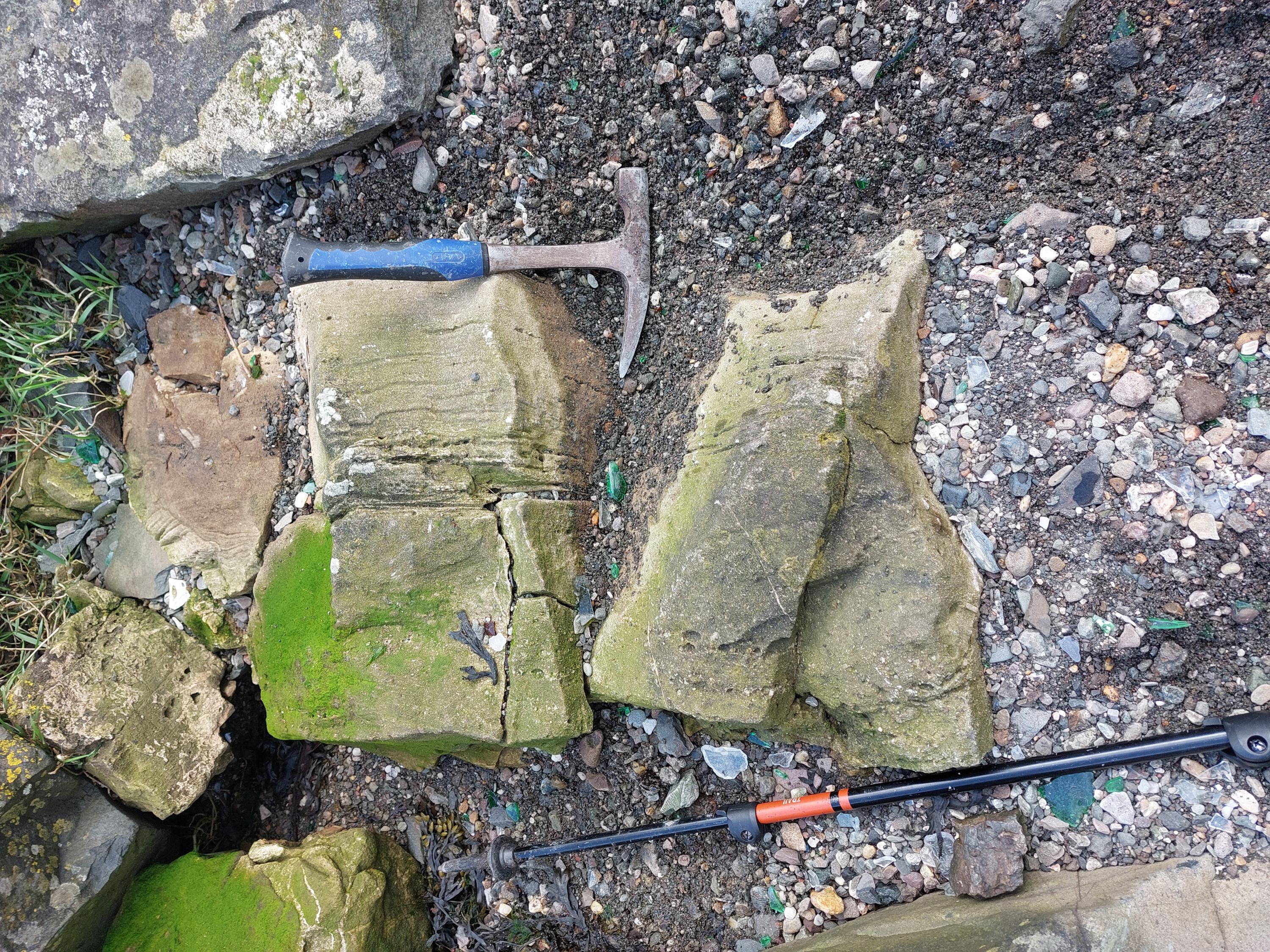
Vertically bedded blocks of sandstone from Kinnesswood Formation. The lowest level of exposed country rock. This is probably a slumped block that fell into the vent at the cessation of volcanic activity.
David Webster
April 11, 2024
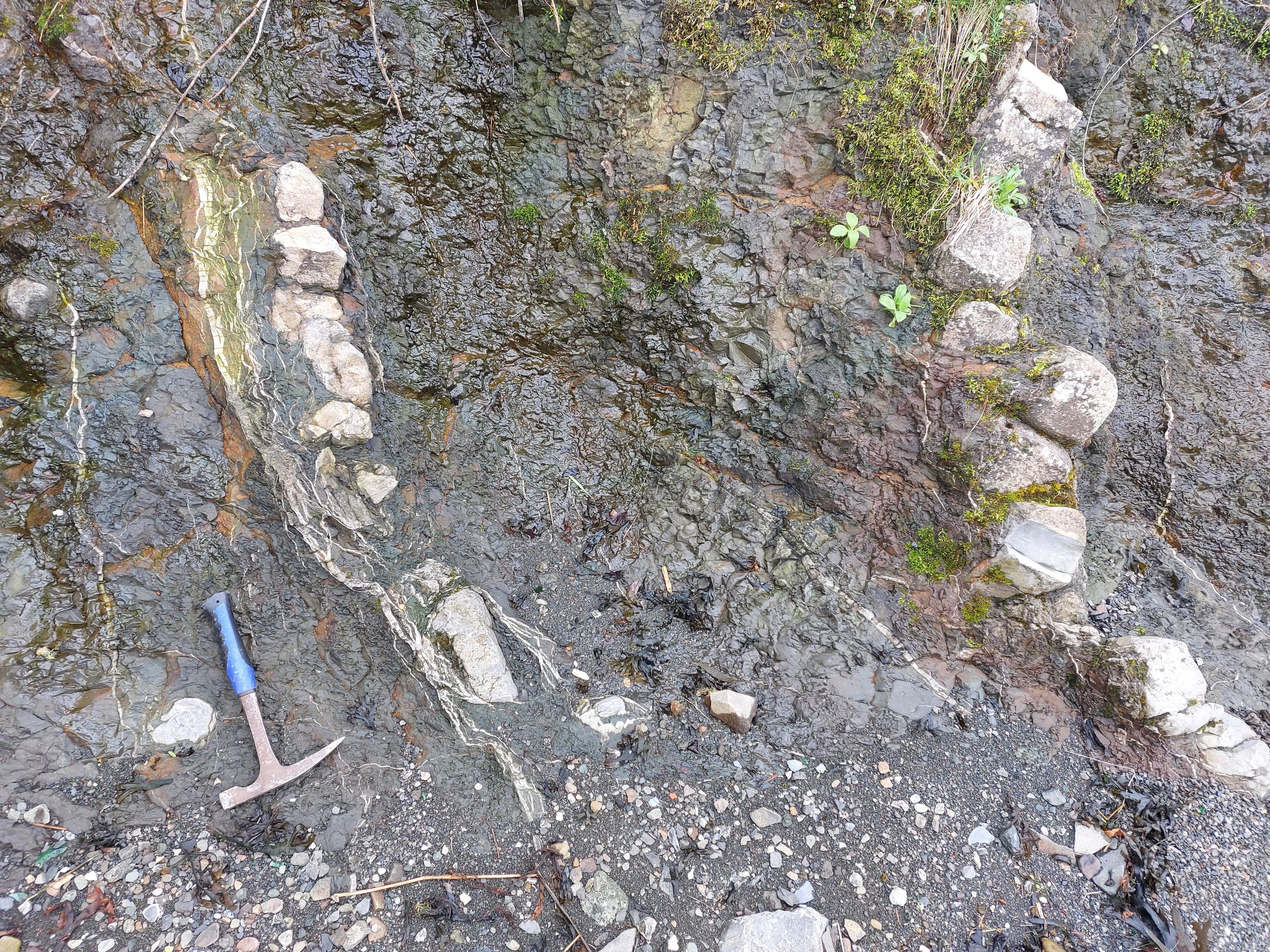
Vertical cementstones and mudstones of Ballagan Formation. Probably slumped into the vent. Rocks in the vicinity are brecciated with fibrous calcite veining
David Webster
April 11, 2024
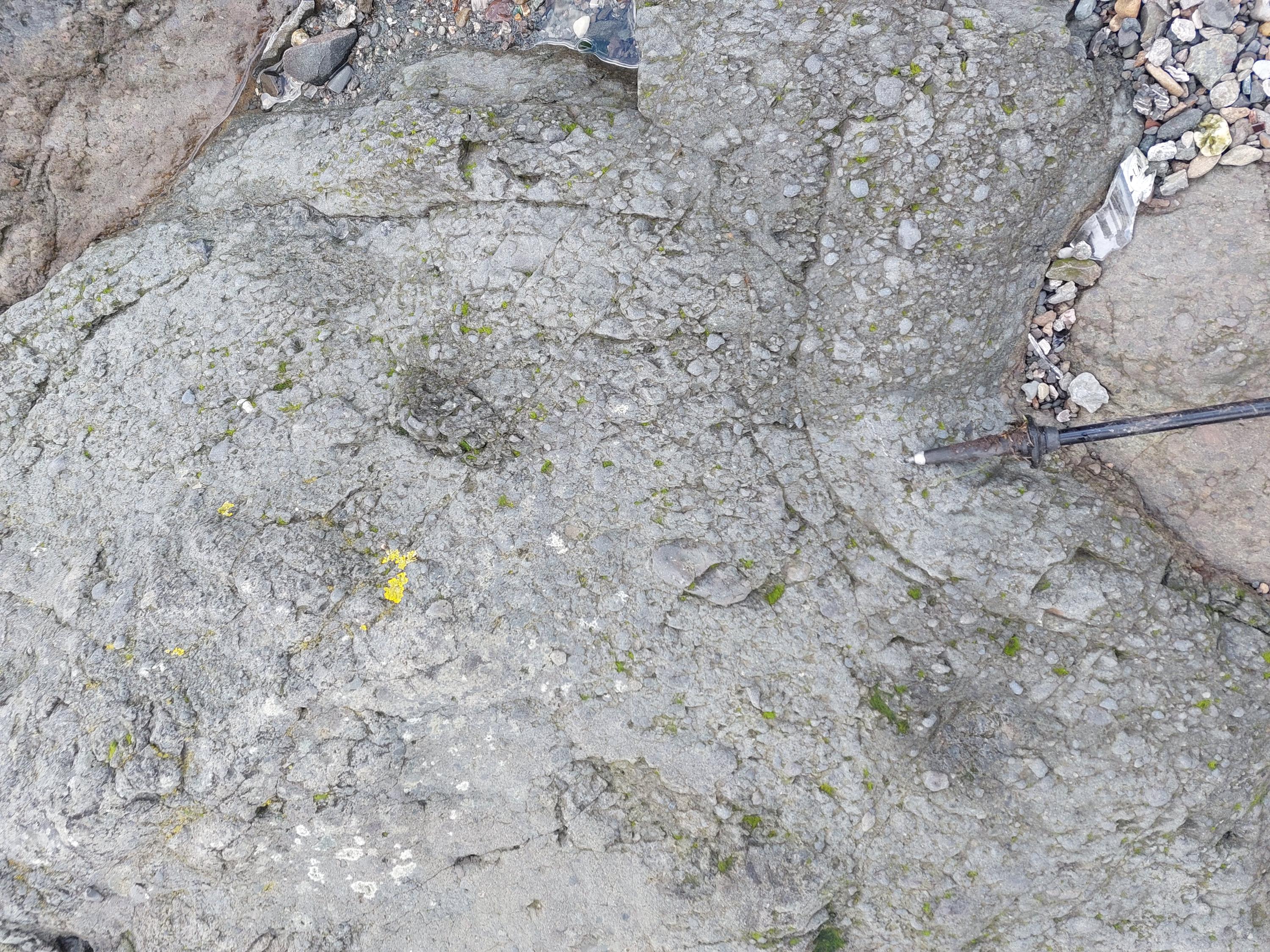
Bedded tuffs - remnants of the volcanic cone around the volcanic vent. Fragments of volcanic rock in matrix of fine ash with calcite and chlorite. There is a prominent bed of sandy tuff (next photo)
David Webster
April 11, 2024

Bed of sandy tuff within bedded tuffs
David Webster
April 11, 2024
Dumbarton Rock - SGG Leaflet
David Webster